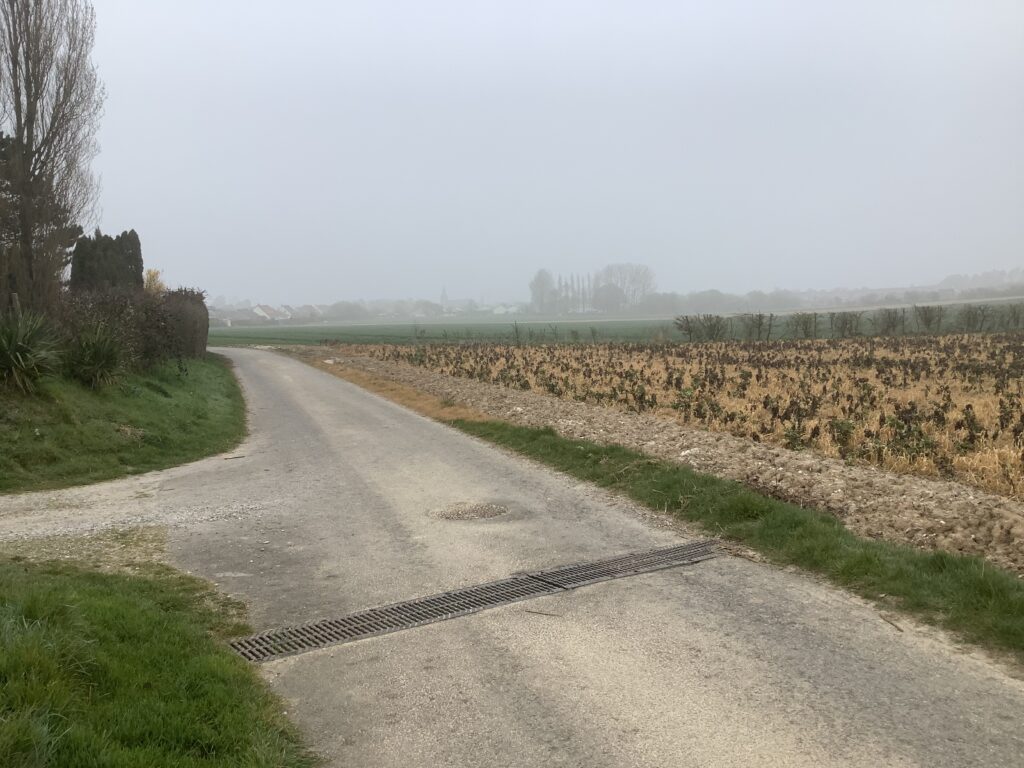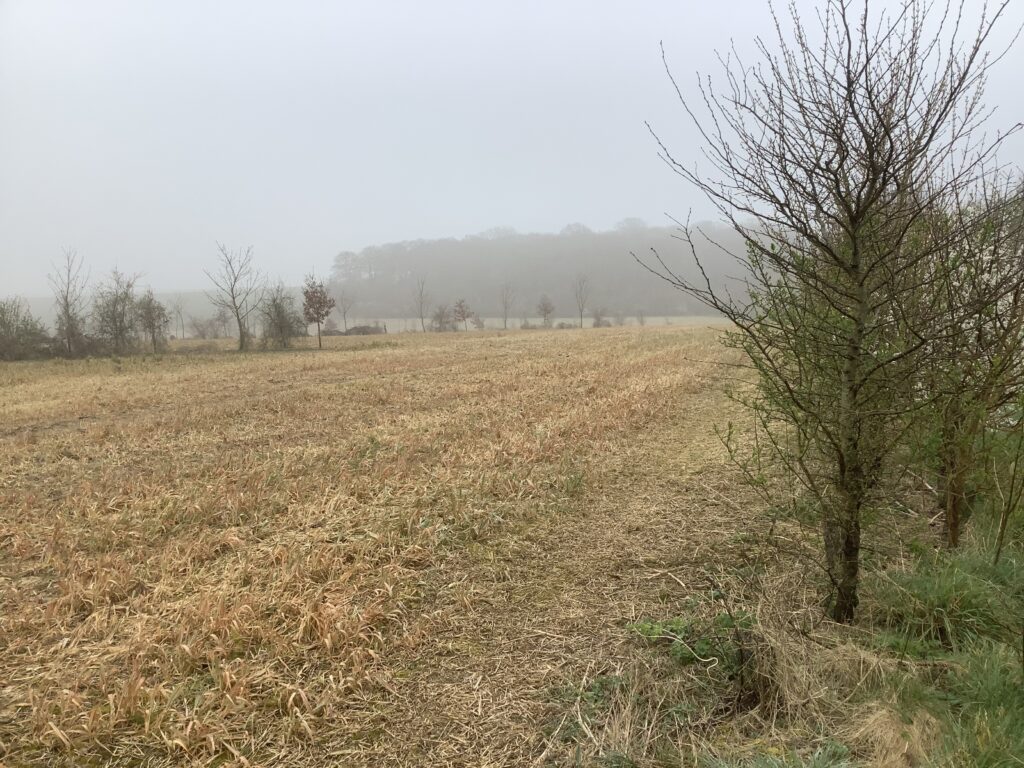Again the day started foggy, but this time it was really quite thick and took most of the morning to clear. Even then it was only partial with occasional glimpses of sunshine.

As we left Guines it was sad to see so many fields which had been treated with Glyphosate (Roundup) and were consequently without life. We felt sorry for the larks trying to nest in this desert of dead vegetation. This practice, which seems to have been expanding in recent years, is devastating for wildlife, for the health of the soil and demonstrates a lack of understanding, or perhaps disregard, for the vital interrelationships which exist between farming and the natural biological systems around it (read James Rebanks’ book English Pastoral).

After crossing the main Calais-Lille-Paris railway line our route took us into the extensive Foret de Guines. Here we enjoyed birdsong, dodged mountain bikers (today was Sunday) and heard our first French woodpeckers. It was too early for the bluebells, but in a few weeks they will be spectacular. The wood anemones and celandines were resolutely refusing to open on such a grey morning.

Once out of the forest we were back into farmland, this time more mixed use with established hedgerows, and notably more birds and wild flowers. At the the end of the Route de Mat we came upon a picnic table at the roadside with an interpretation board describing the Via Francigena – a perfect place for lunch!
From here our route took us via a rather tortuous path north, north west, then east, then south again causing us to doubt our navigation at several points. So far, however the Via Francigena signposting has been pretty reliable, and so it was today, delivering us to the crest of a formidable chalk escarpment overlooking Alembon and the valley of the River Hem.

At this point it’s worth noting for future pilgrims that there is little or no accommodation in Licques, but a Gite may be available in the village of Alembon. The owner, a former pilgrim herself seemed very kind and willing to help us out, but sadly, we’d already made other arrangements to divert to an Auberge in Ardres, 10km to the north.
As we descended off the ridge the Abbaye de Notre Dame at Licques came into view through a break in the woods.

Standing on top of a hill in the middle of the Hem valley, the Abbaye stands prominent in the valley landscape. Founded in 1075, just nine years after the Norman Conquest of England, the Abbaye had been a dominant factor in the development of social, religious and agricultural life in the area for more than 900 years. It was particularly famous for its breeding of turkeys. The principal abbey building of today is largely 18th century. Although used for regular parish worship, it is in a poor state of repair, with cracks in the block work over the chancel suggesting the need for some serious work.
aw(Nevertheless, the grandeur of the building persists. A fitting, yet humbling, place to experience the Lord’s presence. No canned music here.

Being the end of our day’s walk, but with no locally available accommodation, we called a taxi to take us to Ardres, with a plan to return to Licques to continue tomorrow.